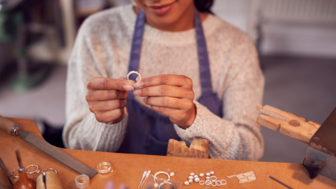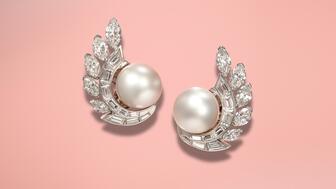The entrepreneur and “Shark Tank” star will share his top tips for success.
NRF: 79% of Consumers Still Shop Primarily In Store
The statistic was one of many found in a recent survey done for the first edition of the association’s quarterly Consumer View report.

Washington--Despite the increased focus on digital and mobile shopping channels, most consumers still shop in stores primarily, according to a new study from the National Retail Federation.
The NRF just launched Consumer View, a quarterly report designed to gauge consumer behavior and shopping trends.
It partnered with Toluna Analytics to produce the reports, surveying 3,002 consumers between July 20 and 25, and released the first edition with insights into experiences with technology, what brings the younger generation into the store, and what differentiates the online and in-store shopper.
What did the survey uncover about where consumers are shopping today? Among the insights was the fact that brick-and-mortar retail remains an important touchpoint for modern consumers.
In fact, 79 percent of consumers said they purchase half or less of their items online, meaning the majority of them still are primarily in-store shoppers. Only 21 percent indicated that they buy the majority of their goods online.
The latter number, not surprisingly, goes up to 34 percent when isolated to just Generation Z and its slightly older counterpart, Generation Y or the millennials.
However, that doesn’t mean members of these two demographic groups no longer visit stores.
“This report shows that the bricks-and-mortar store is still the cornerstone of American retail and likely will be for many years to come, as consumers seek authentic interaction and experiences with retailers,” NRF President and CEO Matthew Shay said. “Despite the changes in our industry, there is an appeal to seeing and touching merchandise in person and being able to engage with fellow human beings that has yet to go away. Even younger shoppers see the value of the store.”
When it comes to convincing the younger generations to come into the store, the survey shows that they can be swayed to visit physical stores when they are offered a new experience, or to pick up products purchased online.
And, in fact, about half of millennials and Gen Xers surveyed indicated they’re shopping in stores more than they were a year ago.
“Despite the changes in our industry, there is an appeal to seeing and touching merchandise in person and being able to engage with fellow human beings that has yet to go away.”-- Matthew Shay, NRFIn the survey, this holds true across all age groups. Fifty percent of survey-takers said they are visiting physical stores about the same as they used to, with
And even though, overall, 74 percent of respondents said they typically visit a store to pick up something specific rather than to browse, the younger generation is more likely to see a retail store as an opportunity to socialize--to hang out with friends, to talk to a sales associates and to explore.
The Technology Touch
Interestingly, while many conversations regarding the retail industry revolve around the technologies that will create the “stores of the future,” the NRF’s survey showed that many of these still are on the periphery of consumer awareness and usage.
Today’s shoppers are more concerned with the innovations that impact the most important parts of their retail experience--how they pay for items and how they get their purchases.
As such, payment and fulfillment technologies lead consumer awareness; nearly seven out of 10 consumers have heard of mobile payment options and “buy online, pick up in store” options, and more than half have tried them.
Meanwhile, with in-store digital displays, for example, only 30 percent of consumers are aware of that technology. Of those, only a little more than half have actually tried them. For augmented reality, that number decreases to 20 percent aware and about half having used the technology.
When it comes to what they want next, shoppers are most interested in trying 3-D printing and drone delivery.
The Latest

The Ukrainian brand’s new pendant is modeled after a traditional paska, a pastry often baked for Easter in Eastern European cultures.

The jeweler has announced a grand reopening for its recently remodeled location in Peoria, Illinois.

The “Strong Like Mom” campaign features moms who work at Tiffany & Co. and their children.


Interior designer Athena Calderone looked to decor from the 1920s and 1930s when crafting her first fine jewelry collection.

During a call about its full-year results, CEO Efraim Grinberg discussed how the company is approaching the uncertainty surrounding tariffs.

Bench jewelers spend years honing their skills, Jewelers of America’s Certification validates their talents.

The free program provides educational content for jewelry salespeople and enthusiasts to learn or refresh their diamond knowledge.

The feedback will be used to prepare other jewelers for the challenges ahead, the organization said.

The online sessions are designed to teach jewelers to use AI tools like ChatGPT and Claude to grow their business.

The opening marks the jewelry retailer’s first location in the Midwest.

The “United in Love” collection offers tangible mementos of hearts entwined with traditional and non-traditional commitment heirlooms.

Robert Goodman Jewelers will hold a “Black Jewelry Designers and Makers” event on April 27.

The announcements follow a tumultuous start to 2025 for WJA, which saw a wave of resignations following controversial statements about DEI.

Editor-in-Chief Michelle Graff answers questions about how the new taxes levied on countries like India and China will impact the industry.

Kenewendo, Botswana’s minster of minerals and energy, discusses closing the deal with De Beers and the work that was missed along the way.

The historic fancy vivid blue diamond set to headline Christie’s Geneva sale next month could sell for up to $50 million.

LVMH CFO Cécile Cabanis also discussed the effects of tariffs so far.

The “Mad Men” and “The Morning Show” star steals jewelry, art, and handbags from his wealthy neighbors in “Your Friends & Neighbors.”

The organization has reelected Kalpesh Jhaveri as president.

An investigation found that the former managing director of Movado’s Dubai branch overstated and prematurely recorded sales.

The collection pays tribute to the Japanese philosophy of Ma, studying balance, stillness, and the interplay between presence and absence.

Mari Lou’s Fine Jewelry in Orland Park, a suburb of Chicago, is closing its doors.

GIA’s labs in Dubai and Hong Kong are now accepting larger diamonds in light of the “logistical challenges” presented by the new tariffs.

These earrings by Van Cleef & Arpels, featuring the same design as a pair worn by Princess Grace, are up for auction at Woolley & Wallis.

Two experts share how artificial intelligence tools can help retailers run a more efficient business.




























